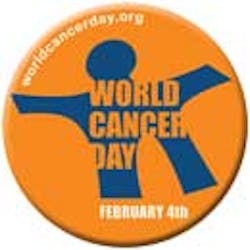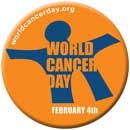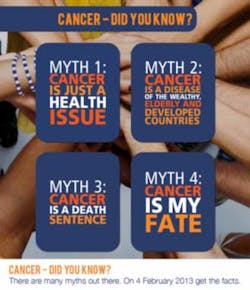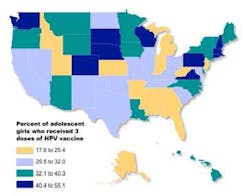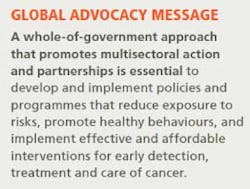World Cancer Day is every day
World Cancer Day is an annual event led by the Union for International Cancer Control that aims to improve general knowledge around cancer and dismissing misconceptions about the disease. The organization announced in January that preventive measures could reduce 1.5 million deaths per year caused by cancer.(1)
According to new data released by the American Institute for Cancer Research, fewer Americans than ever realize of factors that increase cancer risk, including alcohol, obesity, lack of physical activity and poor diets.
The information, from the Institute’s Cancer Risk Awareness Survey, found that a high percentage of over 1,000 respondents selected cancer-risk factors including tobacco use (92 percent) and sun exposure (84 percent). Most failed to identify other risk factors, with only:
• 43 percent indicating that diets low in vegetables and fruit increase cancer risk;
• 38 percent indicating that alcohol increases risk; and
• 36 percent indicating that lack of physical activity increases risk.(1)
“One of the most persistent and widely-held myths is that cancer is just ‘bad luck’ or ‘fate,’” said Marilyn Gentry, president of the World Cancer Research Fund Global Network.(2) “The truth, however, is that about a third of the most common cancers could be prevented through sticking to a healthy diet, being physically active and managing our body weight. Prevention is by far the most cost-effective and sustainable way of reducing the cancer burden.”(2)
There is good news, as well. According to statistics from the American Cancer Society, rates of deaths caused by all forms of cancer in the U.S. have fallen 20 percent from 1991.(3) And between 2000 and 2009, cancer death rates have decreased by 1.8 percent per year among men and by 1.4 percent per year among women.(4) However, the data show increases in death rates for skin, liver, pancreatic and uterine cancers.
The Annual Report to the Nation on the Status of Cancer, 1975–2009, Featuring the Burden and Trends in HPV-Associated Cancers and HPV Vaccination Coverage Levels provides a regular update of cancer incidence (new cases) and mortality (death) rates and trends in these rates in the United States.
The American Cancer Society (ACS), the Centers for Disease Control and Prevention (CDC), the National Cancer Institute (NCI), part of the National Institutes of Health, and the North American Association of Central Cancer Registries (NAACCR) have collaborated since 1998 to create the Annual Report to the Nation on the Status of Cancer. The special feature section of this year’s report highlights the burden and trends in human papillomavirus (HPV)-associated cancers as well as HPV vaccination coverage levels among adolescent girls.(3)
References
1. http://www.worldcancerday.org/world-cancer-day-2013-global-press-release.
2. http://www.aicr.org/about/world-cancer-day/world-cancer-day-mg-letter.html.
3. Jemal A, Simard EP, Dorell C, Noone AM, Markowitz LE, Kohler B, Eheman C, Saraiya M, Bandi P, Saslow D, Cronin KA, Watson M, Schiffman M, Henley SJ, Schymura MJ, Anderson RN, Yankey D, and Edwards BK. Annual Report to the Nation on the Status of Cancer, 1975–2009, Featuring the Burden and Trends in HPV-Associated Cancers and HPV Vaccination Coverage Levels. Journal of the National Cancer Institute. Published online Jan. 7, 2013. Print version Vol. 105, Issue 3, Feb. 2013. DOI:10.1093/jnci/djs491. http://www.cancer.gov/newscenter/newsfromnci/2013/ReportNationQA.
4. http://www.publichealthnewswire.org/?p=6140.
5. http://jnci.oxfordjournals.org/content/early/2013/01/03/jnci.djs491.full.pdf+html?sid=ad895cbd-c68d-48d2-a6d0-f686571233b5.
6. http://www.worldcancerday.org/fact-sheets.
7. http://www.worldcancerday.org/sites/default/files/private/121211_eWCDFACT1_EN_FA.pdf.
8. http://www.worldcancerday.org/wcd-home.
